The belfry of Ghent is one of the many buildings in the city of Ghent that has a long history. It's quite hard to imagine that this building was already there more than 700 years ago!
I've been to the city of Ghent before and I can really recommend you to visit this lovely city too. There is so much to see and to do that we didn't manage to take a look inside the belfry at our previous visit. But recently we went to Ghent for a second time and now I really wanted to see the inside of the building as well. So we booked ticket and checked it out. And we didn't regret it al all.
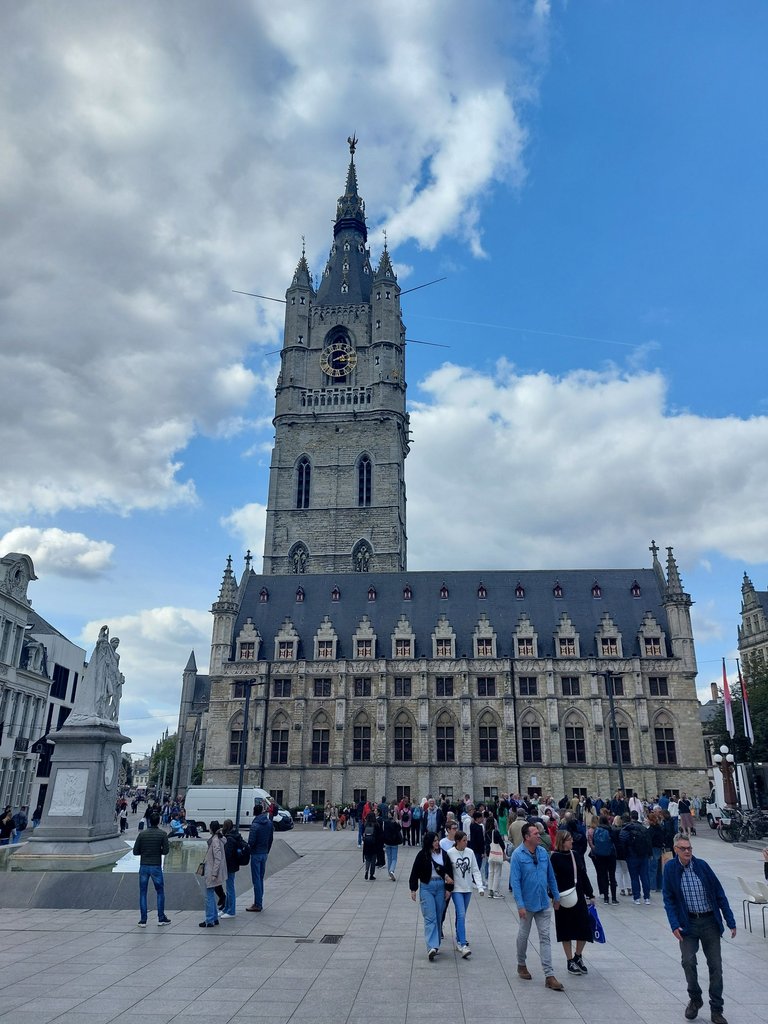
History and use
The belfry has quite a long history. The construction started back in 1313 and it was finished in 1380. The building was used as a watchtower for sounding alarms in times of danger both in times of war as to spot fires in the city. The belfry was also storage for important documents like legal documents that established Ghent’s rights to self-governance, trade privileges, and laws that protected the city's independence from external rulers.
Because the belfry is a fortified structure, the city ensured their safety in the sometimes turbulent times in the middle ages.
The guards
As I mentioned above; one of the main purposes of the belfry was to serve as a watchtower. From 1442 until 1869 the corps of 'city-watching men' protected the city by looking out for invasions and city fires. The corps consisted of watchmen and bell ringers. On top of the building there are still some replicas of the statues of the watchmen and in the basement there is still one of the original statues.
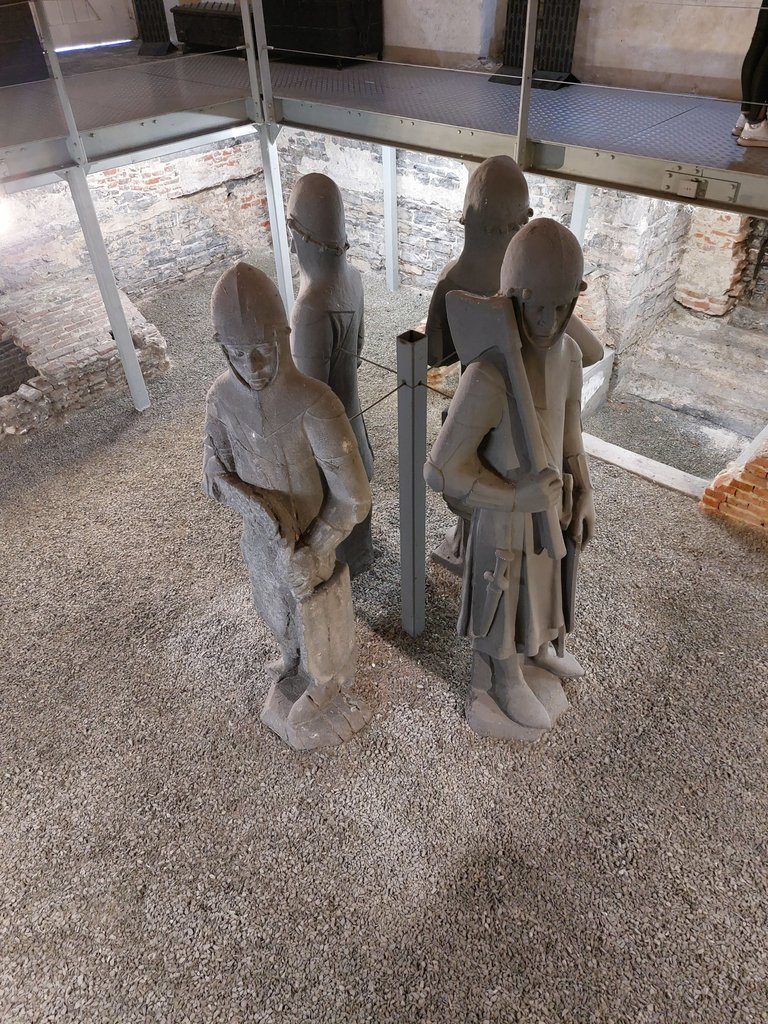
The bells and the clock
The belfort was also used as a clock. In 1380 already they started to indicate the time on the belfry. Back then the tower guards had to correct the clock a few times a day using a sundial.
In the 17th century they introduced a the pendulum clock was installed that gave a more accurate time.
In case of a fire or an invasion the huge bell was rung so either the firefighers or army was alarmed.

In 1552 a carillon was installed in the belfry. A carillon consists of a series of bells that can be played by striking them with hammers which can play songs. They started with with eighteen bells, but today the carillon has 54 bells.
The carillon can be played both manually as automatic. Every 15 minutes the carillon plays a melody via an automatic music roll that is connected to the bells.
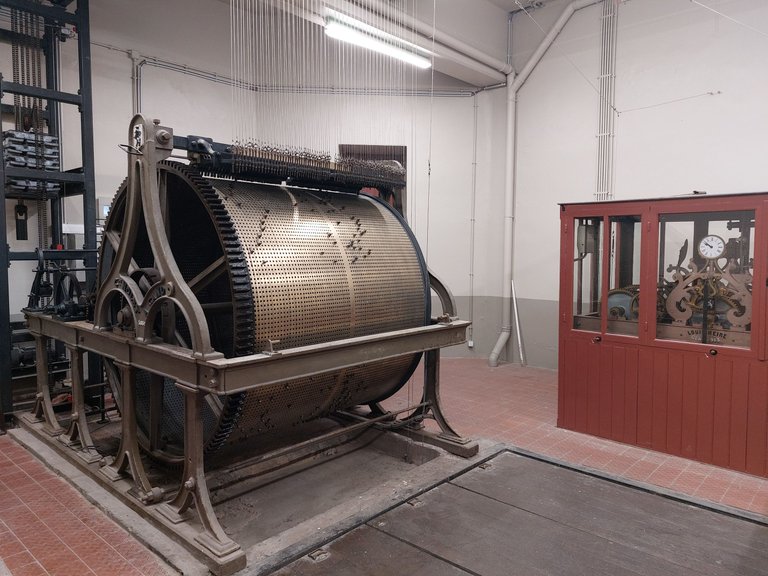
Cloth hall
In the middle ages Ghent was a flourishing trading city. One of the most important export products in that time became whool and cloth. In 1425 a cloth hall was build and attached to the belfry. On the cloth hall the products were inspected, valued, and sold.
In the middle of the eighteenth century a prison was installed in the Cloth Hall.
There is a Greek legend that a prisoner who was sentenced to death was breast fed by his daughter to keep him alive and finally the man is granted clemency.
There is a relief of this "Mammelokker" legend (which translates to "nipple bottle" in English) on one of the outside walls of the building.
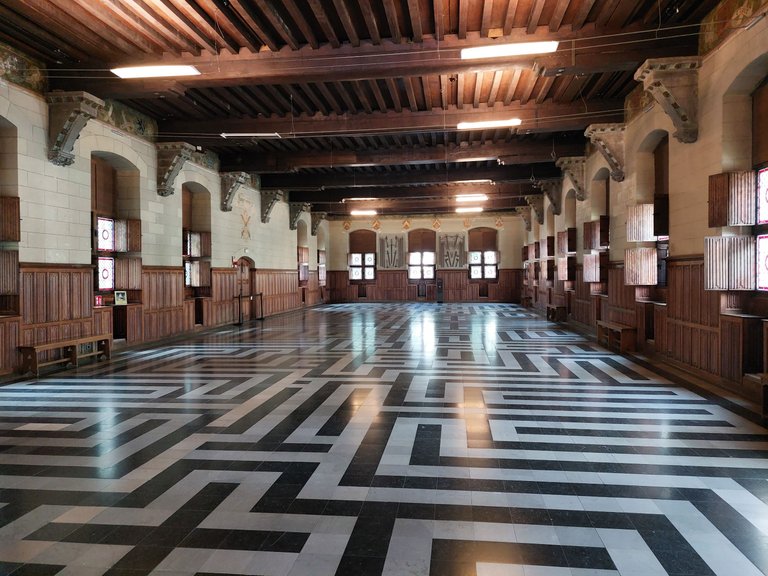
In the back of the hall there are some very old and brutal weapons from the middle ages. The most interesting I find is the flail; a stick with a chain with an iron ball with pointy spikes attached to it. You didn't want to get hit by that one.
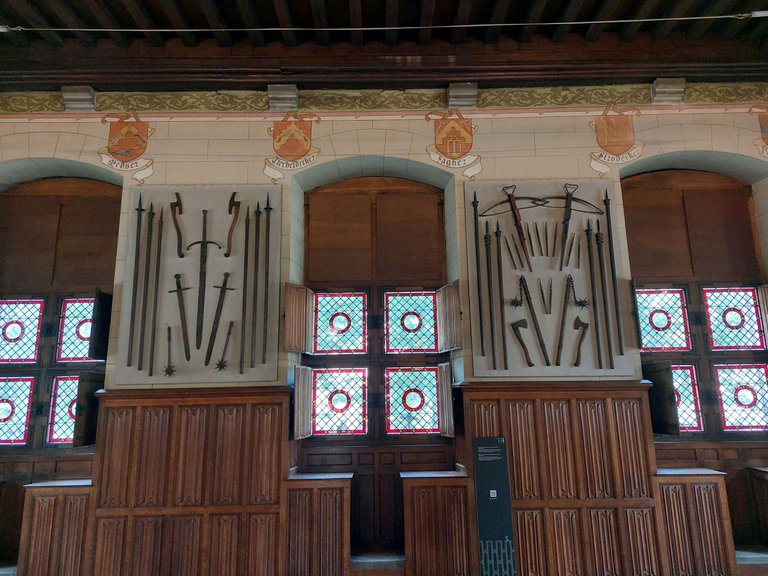
The dragon
And then there is this other legend; the golden dragon. The stories of the dragon go a back a long time. There are several stories about the dragon that was placed on the tower in 1382. The dragon is a symbol of power and independence.
According to legend, the golden dragon belinged to the Norwegian king Sigurd Magnusson who had it on one of its ships that sailed on a crusade in 1111. After many battles he captured the city of Sidon.
He then gifted the dragon to the Emperor of Constantinople (nowadays called Istanbul) to place it on the dome of the Hagia Sophia.
Many years later the Flemish Count Baldwin IX had the masterpiece transferred to the Flanders.
The dragon was taken as a war trophy by the rebels of Ghent in the battle of Beverhoutsveld against the Burgundian rulers that took place on January 3, 1382.
They came back and placed the giant dragon on the belfry.
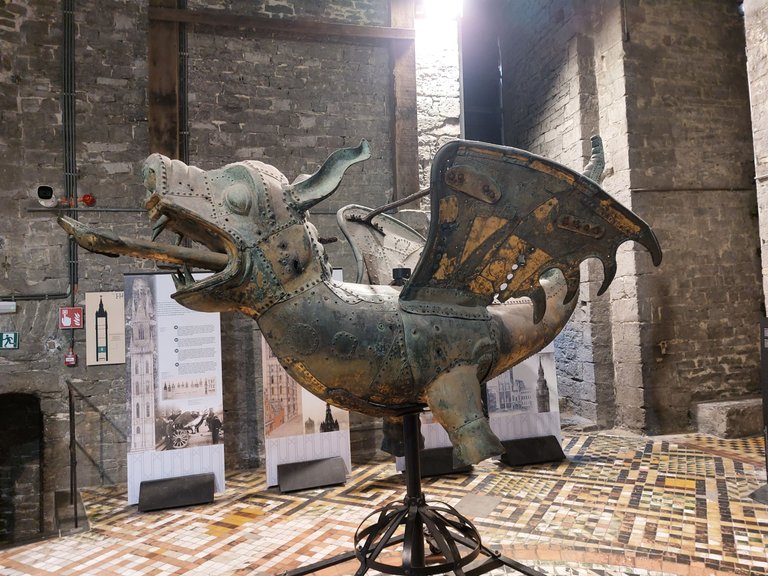
The original dragon has been replaced two times. The one that was on the tower from 1780 until 1980 is displayed inside the belfry. You can see the holes in its wings that were caused by the bullets it took during World War II. In 1980 the current dragon was placed on the tower. The 400 kilogram heavy dragon was put on top of the tower with a helicopter.
This newest version is also capable of spitting fire. They make the dragon spit fire every year during the yearly festivities.
The views
The belfry is 91 meters tall. The original entry of the building is underground since they had to raise the streets in the past because of the raising water level.
Because of its height and the giant dragon on top it can be seen from almost all over the city.
During the tour we were also able to go up into the tower. There is an elevator that goes up to the 3rd floor which is just below the clock.
From there you can make a walk around the outside of the tower where you have a beautiful view of the surroundings.
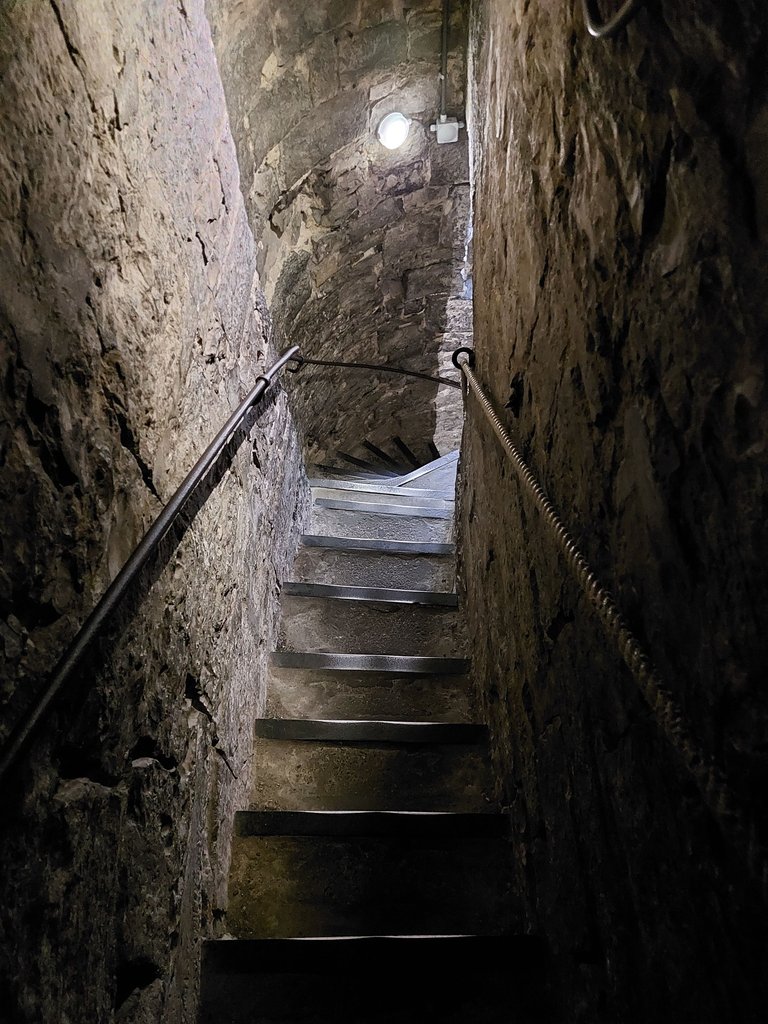
You can go up with the elevator, but you have to go down via the narrow stairs.
I will end my blog with a couple of shots I made from the top of the tower.
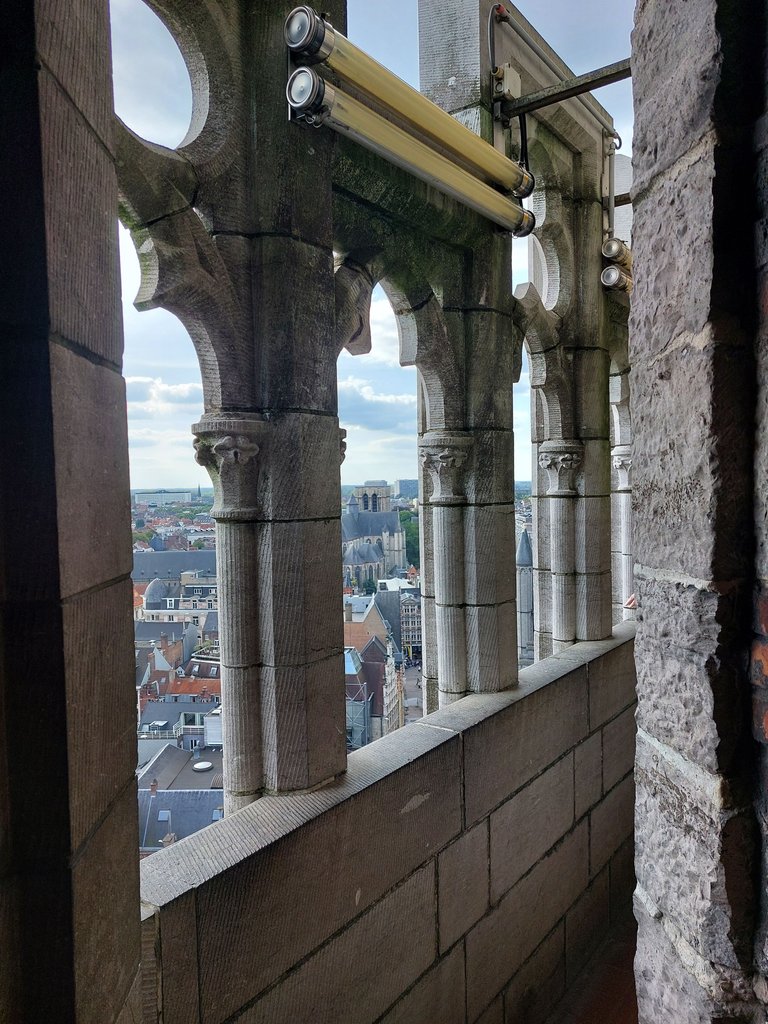
View on the Saint Bavo's Cathedral and the concert hall on the left.
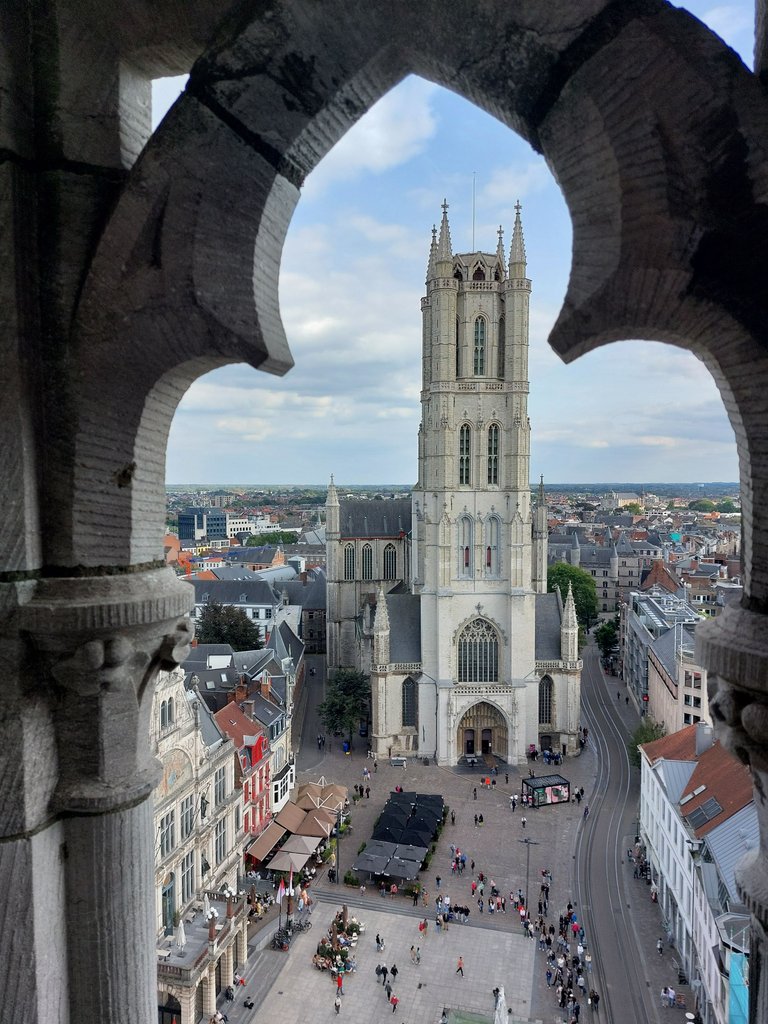
View on the St. Nicholas Church on the other side.
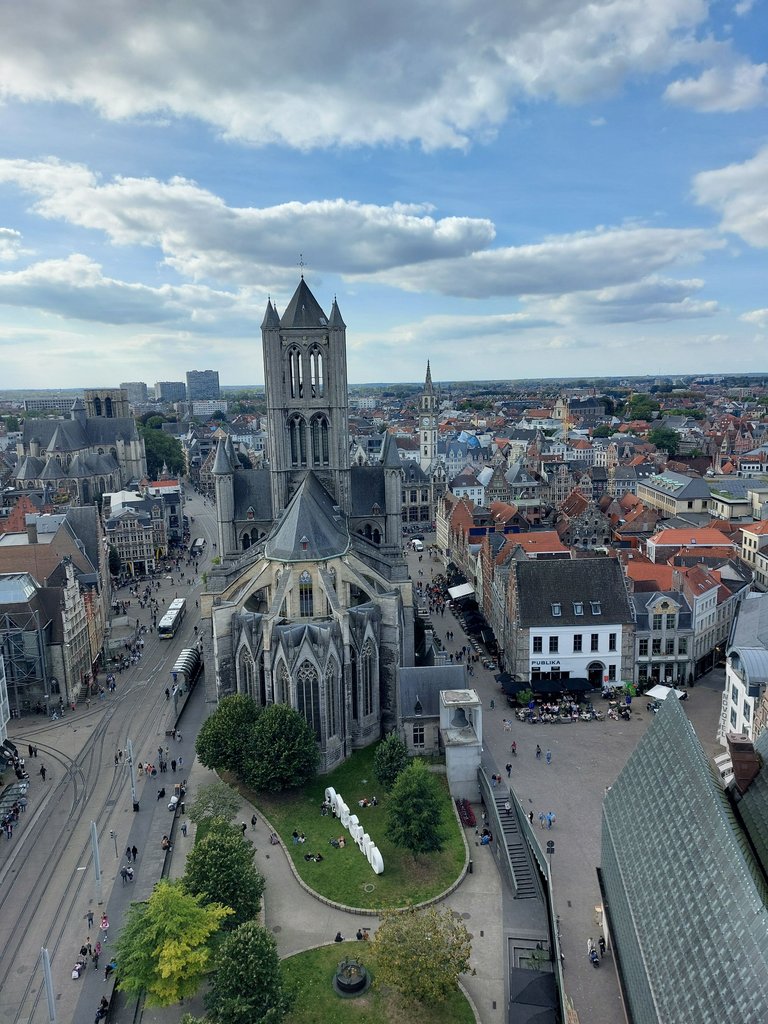
View on the city hall of Ghent.
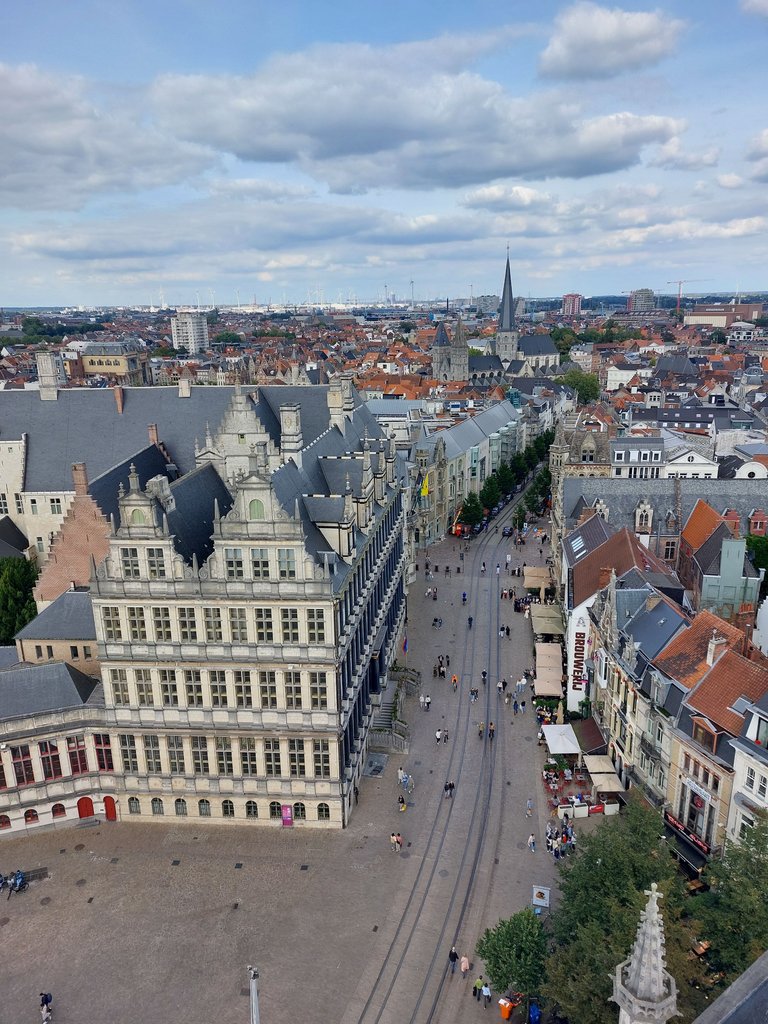
View of the street with a gargoil.
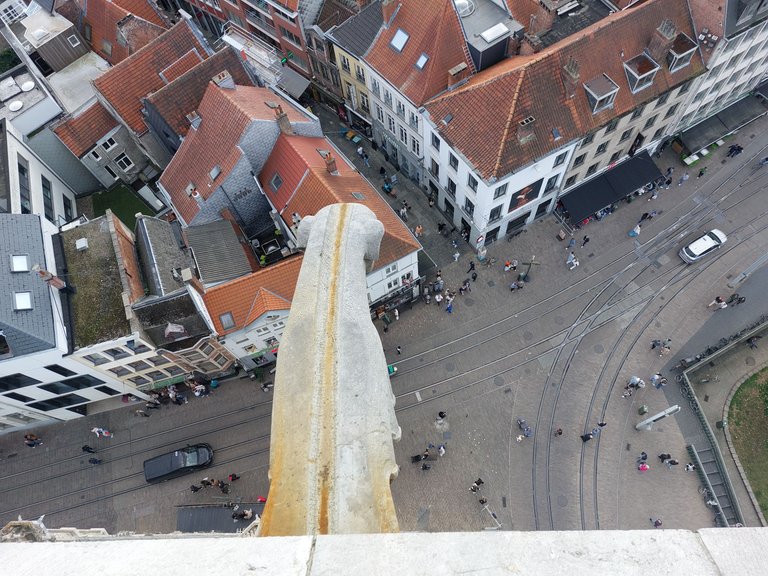
Conclusion
Our visit to the Belfry of Ghent was a great experience. The building exudes history and there are some great stories about the tower whether they are true or not.
Since the carillion plays every 15 minutes you get to hear it a couple of times from within the tower itself which is also a great experience.
And finally the views from the top are amazing!
An entry ticket for an adult costs 11 euro, but is was totally worth it in my opinion. So don't skip this beautiful tower when you visit Ghent!

FriendlyMoose
Thanks for checking out this post!
Be sure to follow me if you want to see more of me.
Also check out some of my projects on Hive below!

A weekly blog with an overview of all the photography contests on Hive. Find these posts by clicking the following tag: #photocontests.

Join my weekly photography contest. A photocontest for every photographer; amateur or pro with a different subject every week. Check out the following tag: #pobphotocontest.

Do you have a passion for cycling? Then join my Cycling Community!
You can support the Cycling Community by clicking one of the amounts below
How beautiful your photos are, really a pleasure
Thank you!
🙏🏻🙏🏻🙏🏻🙏🏻🙏🏻🙏🏻🙏🏻🤗🤗🤗🤗
Fantastic travel post.
!PIZZA
Thanks!
🎉 Upvoted 🎉
👏 Keep Up the good work on Hive ♦️ 👏
sagarkothari88 to upvote your post ❤️
Congratulations, your post has been added to WorldMapPin! 🎉
Did you know you have your own profile map?
And every post has their own map too!
Want to have your post on the map too?
Travel Digest #2324.
Become part of our travel community:
- Join our Discord
Hiya, @ybanezkim26 here, just swinging by to let you know that this post made it into our Top 3 in Your post has been manually curated by the @worldmappin team. If you like what we're doing, please drop by to check out all the rest of today's great posts and consider supporting other authors like yourself and us so we can keep the project going!!LOL
Posted using Hive Images
lolztoken.com
The outside.
Credit: reddit
$LOLZ on behalf of hivephoto
(1/10)
Farm LOLZ tokens when you Delegate Hive or Hive Tokens.
Click to delegate: 10 - 20 - 50 - 100 HP@friendlymoose, I sent you an
This is an interesting place to explore, from the building and the things you will discover inside.
It surely is! Thanks for visiting my blog.
Your welcome, it deserve to visit
Very interesting picture my friend